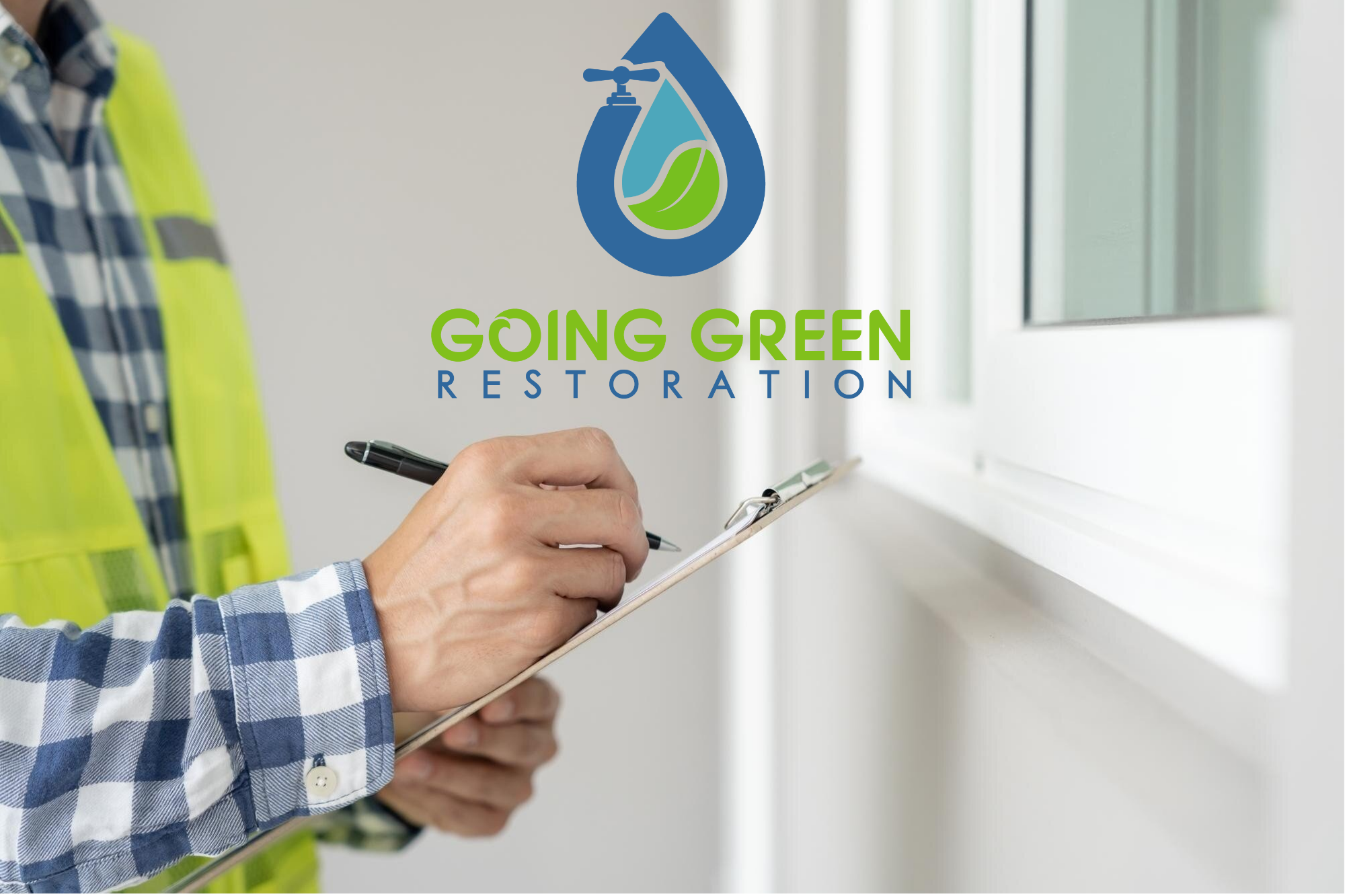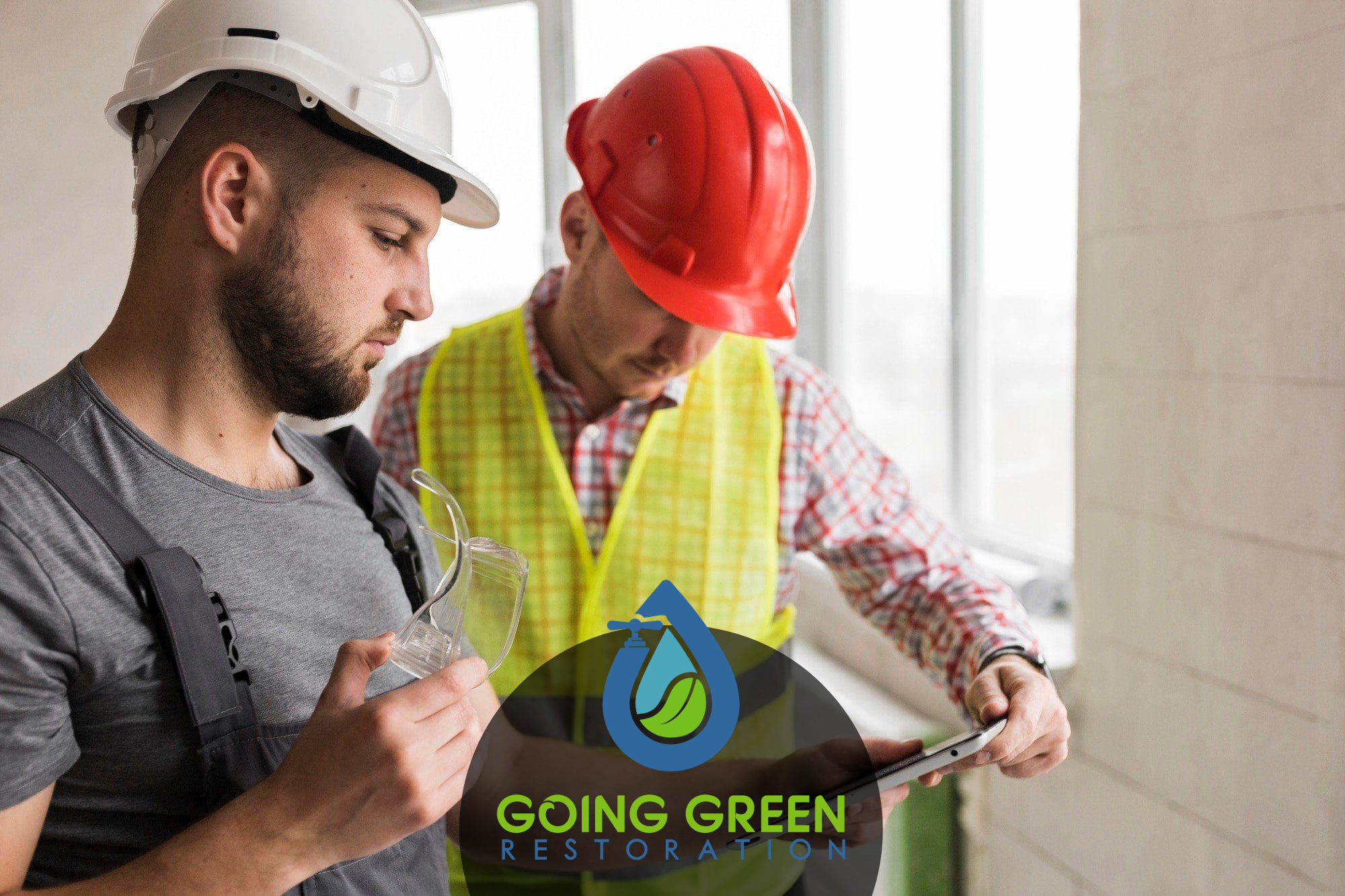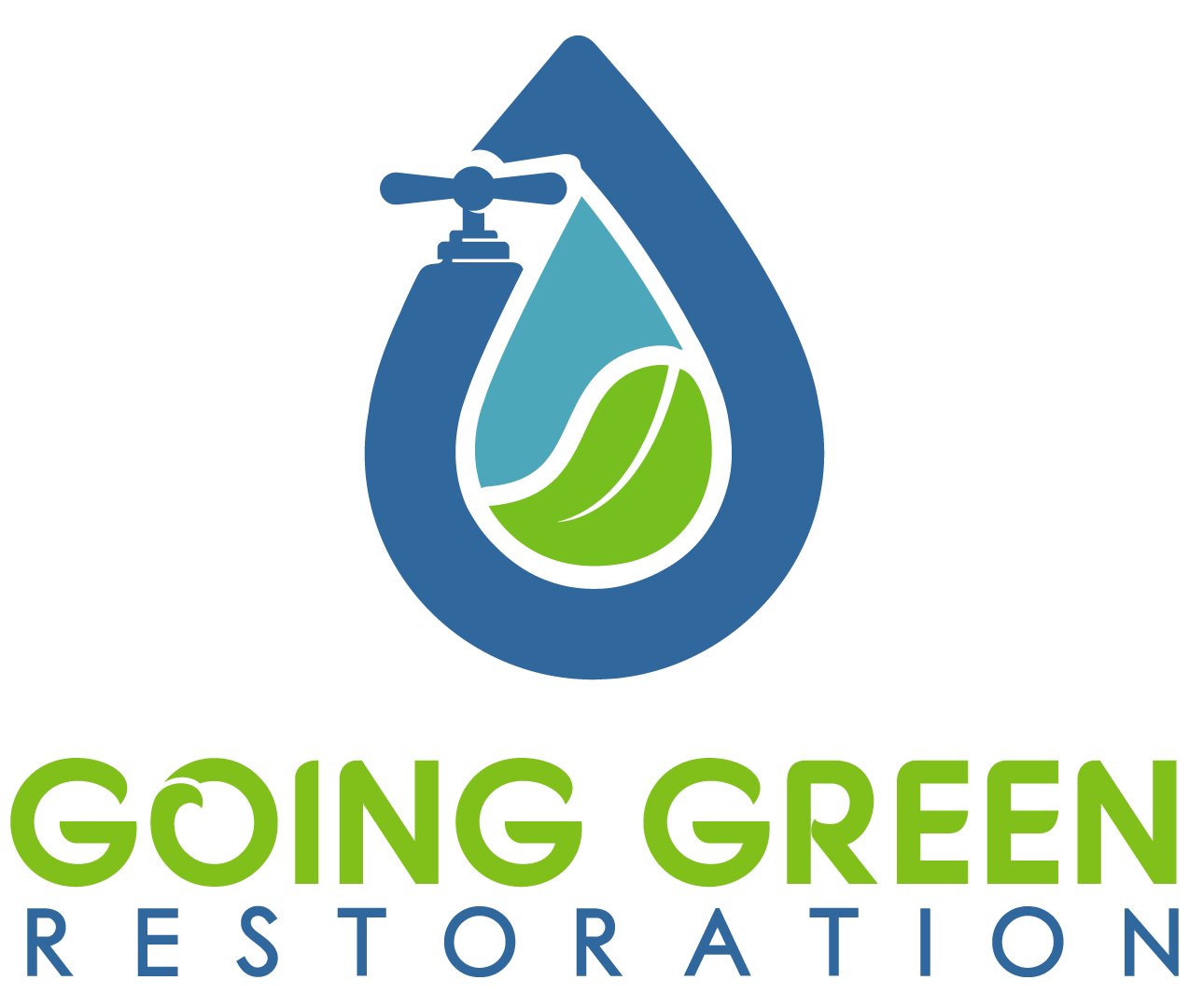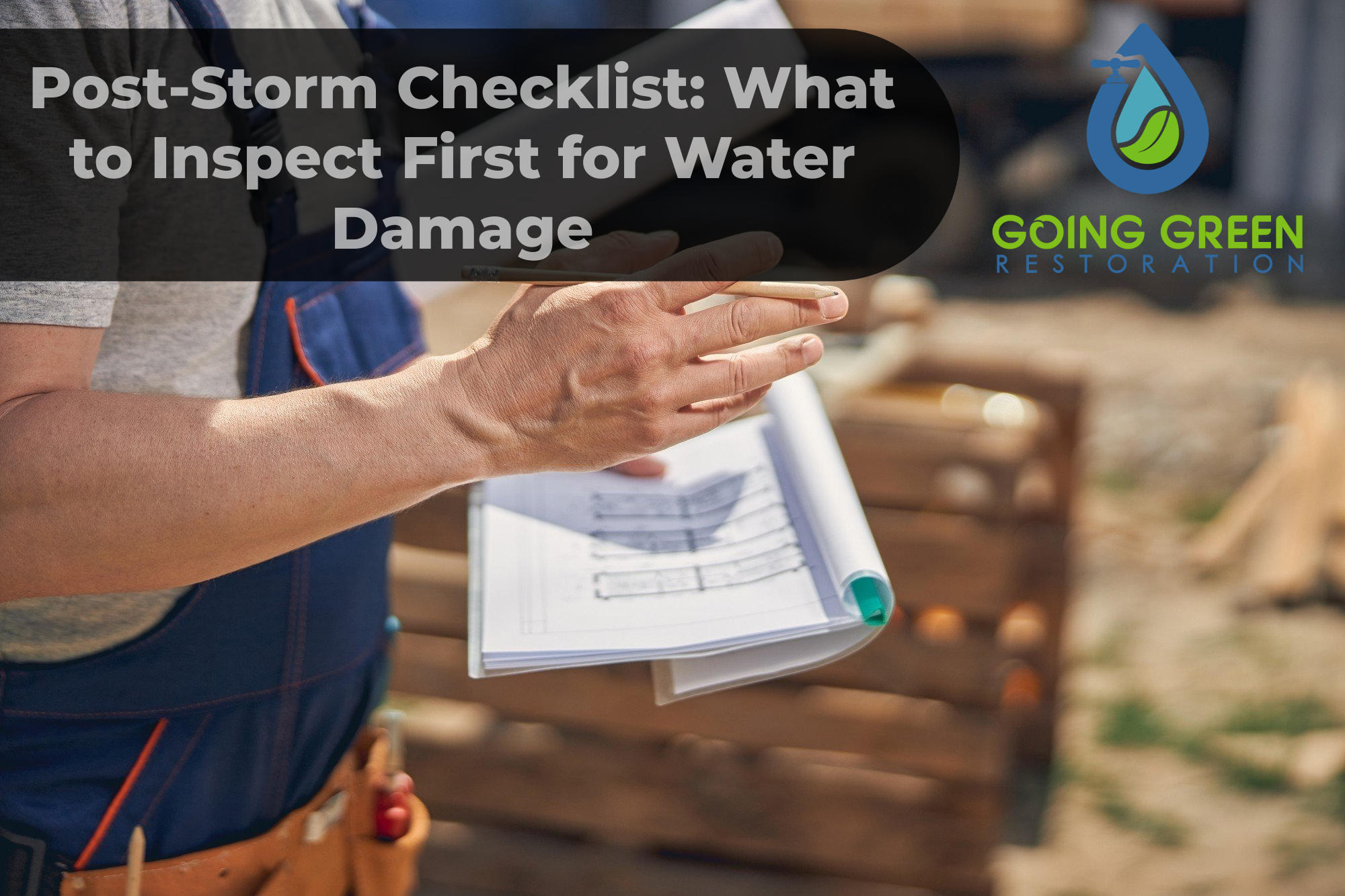Post-Storm Checklist: What to Inspect First for Water Damage
Why Orlando Properties Are So Vulnerable After Storms
Storms in Orlando aren’t just passing showers, they can bring heavy rainfall, strong winds, and even flooding. The city’s subtropical climate means that sudden downpours and hurricane-season weather patterns put added pressure on local properties year after year. For homeowners and businesses, the aftermath can be overwhelming, especially when roofs, windows, and foundations aren’t built to withstand repeated exposure to intense weather events.
Once the skies clear, it’s critical to act fast. Water damage spreads quickly, seeping into walls, floors, and insulation. What may seem like a minor leak can escalate into major structural issues, electrical hazards, or dangerous mold infestations if ignored. This is especially concerning for rental homes, vacation properties, and commercial spaces, where unnoticed damage can lead to costly repairs, business interruptions, or even health risks for tenants and guests.
Another reason Orlando properties are so vulnerable after storms is the area’s high water table and flat terrain. Floodwater has fewer places to drain, which increases the chances of standing water around a property. That moisture can easily penetrate basements, crawlspaces, and ground-level units. Even if your home or business wasn’t directly hit by wind damage, residual flooding and hidden leaks often create problems long after the storm has passed.
We know firsthand how stressful this can feel. That’s why we created this post-storm checklist: to help Orlando residents, businesses, and vacation property owners know exactly what to inspect first after severe weather. By identifying damage early, you can minimize risks, protect your investment, and call in professionals like our Orlando restoration company before the situation worsens.
Step 1: Inspect the Roof and Attic
Your roof is the first line of defense against Orlando’s heavy storms. Strong winds, flying debris, and pounding rain can all compromise its integrity in ways that aren’t always obvious at first glance. Even a few loosened shingles or a small puncture from a fallen branch can leave vulnerable spots where rainwater seeps in, leading to significant water damage over time.
Things to look for after a storm include:
- Missing, cracked, or curled shingles that may allow water infiltration
- Damaged or displaced flashing around vents, skylights, and chimneys
- Water stains on the ceiling or attic rafters
- Damp or compressed insulation that has absorbed moisture
- Signs of sagging or warping in the roof structure
When water penetrates the roof, it often travels further than expected. Even a small leak can drip steadily into the attic, spreading through walls and ceilings, soaking insulation, and creating the perfect conditions for mold to grow within just 24–48 hours. FEMA warns that untreated roof leaks are among the most common, and costly, sources of long-term storm-related water damage in residential and commercial properties.
Another reason roof inspections are crucial in Orlando is the region’s exposure to tropical storms and hurricanes. Repeated stress from high winds and heavy rain can weaken roofing materials over time, even if damage isn’t immediately visible. Checking both the roof and attic ensures that hidden vulnerabilities are addressed before they escalate.
If you discover roof damage, call us immediately for Orlando water damage restoration. Our team can stop the leak, thoroughly dry the affected areas, and apply proven methods to prevent structural deterioration and mold growth. Acting quickly after a storm is the best way to protect your home or business and avoid expensive long-term repairs.

Step 2: Check Windows and Doors
High winds can push rainwater into gaps around windows and doors, especially during Orlando’s powerful storms. While these entry points may seem minor compared to roof or structural damage, they’re actually some of the most common areas for water intrusion. In Orlando’s humid climate, this water doesn’t just dry out, it lingers, seeping into wood frames, drywall, and flooring, creating ideal conditions for mold and long-term deterioration.
After a storm, inspect for:
- Moisture between window panes, which signals compromised seals and poor insulation
- Water pooling on sills or near thresholds, a clear sign that storm-driven rain has entered
- Warped frames or peeling paint, indicators of prolonged exposure to water
- Drafts around windows and doors, suggesting broken or weakened seals that allow both air and moisture inside
- Musty odors near windows or doors, even without visible water damage, often pointing to hidden dampness trapped in walls or under flooring
What makes windows and doors especially vulnerable is that water infiltration often goes unnoticed until it causes secondary damage. A musty smell, peeling paint, or slight discoloration may seem small, but they’re early warnings that moisture has been absorbed into building materials. Left untreated, this can compromise structural integrity, reduce energy efficiency, and lead to costly mold remediation.
Our mold removal Orlando specialists are trained to identify these hidden issues. Using advanced moisture detection tools, we can pinpoint areas where water has seeped in, even when there are no visible signs. By addressing these problems early, we prevent mold colonies from spreading and protect the health of everyone inside the property.
If you notice any of these signs, or even if you’re unsure, it’s always better to schedule a professional inspection right away. Quick action can mean the difference between a simple repair and a full-scale restoration.
Step 3: Examine Walls and Ceilings
Water often leaves telltale signs in drywall and ceilings, and in Orlando homes these signs can develop quickly after a storm. Even if your property looks fine at first glance, water can seep behind walls, spreading silently until visible damage appears. That’s why it’s essential to take a slow walk through every room and inspect carefully, especially in areas directly below the roof or near exterior walls.
After a storm, look closely for:
- Yellow or brown water stains on ceilings or walls, often shaped like rings or streaks
- Bubbling, cracking, or peeling paint that indicates moisture pushing from beneath the surface
- Soft or spongy spots when drywall is gently pressed, suggesting it has absorbed water
- New cracks in walls or ceilings, which can appear as the structure swells or shifts from moisture exposure
- Musty odors near walls, an early warning sign of hidden mold growth
What makes walls and ceilings particularly vulnerable is their construction. Drywall is highly absorbent, which means it can quickly wick up water from roof leaks, window seepage, or flooding. The CDC notes that drywall exposed to water can harbor mold within 24–48 hours, making it one of the fastest areas in a home to develop health hazards after a storm.
Another danger is hidden damage. Even if you don’t see visible staining, water may be trapped behind the walls, soaking insulation, wooden studs, and electrical systems. Over time, this can weaken structural components, create fire risks, and allow mold colonies to spread undetected.
If you notice any of these symptoms, don’t wait. Call for professional Orlando residential mold remediation to keep your home safe and healthy. Specialists use advanced moisture meters, infrared cameras, and proven drying techniques to detect and treat hidden water damage before it escalates into a larger problem. Acting early protects not only your property value but also the well-being of everyone who lives there.
Step 4: Inspect Flooring and Carpets
Stormwater and plumbing backups often seep into flooring, where the damage may not be obvious until it’s too late. Carpets, hardwood, and laminate absorb water quickly, and once moisture penetrates the surface, it can reach padding, subflooring, and even the foundation. This not only weakens structural elements but also creates ideal conditions for odors, microbial growth, and mold infestations.
What to watch for after a storm:
- Damp or soggy carpets, which may feel heavy or squishy underfoot
- Buckling or cupping in hardwood floors, as boards swell and lose their shape
- Tile grout darkening or loosening, a common sign that water has seeped below the surface
- Persistent damp smells, which often mean moisture is trapped in padding or subfloors
- Visible mold spots on carpet backing, especially if water has been standing for more than 24–48 hours
The danger with flooring is that water often travels beneath the surface. For example, wet carpet padding can hold moisture for weeks, even after the surface looks dry. Similarly, hardwood and laminate floors can warp or separate as hidden water causes expansion. Tile floors may appear unaffected, but water can collect underneath, weakening adhesives and creating hidden pockets of mold.
Our Orlando flood damage repair team specializes in identifying and resolving these hidden threats. Using industrial-grade drying equipment, we can extract water from carpets, padding, and subfloors while applying advanced dehumidification techniques to restore balance to your home’s environment. By addressing moisture at its source, we prevent long-term structural damage and protect your property from costly future repairs.
If you notice any of these warning signs, or even suspect water intrusion, acting quickly is key. Flooring materials are some of the hardest to restore once severe water damage sets in, but early intervention often makes the difference between repair and full replacement.
Step 5: Look at the Basement or Crawlspace
If your property has a basement or crawlspace, it’s one of the first areas to suffer after heavy rain or flooding. Because these spaces sit below ground level, they naturally collect water runoff and storm seepage, making them highly vulnerable to long-term damage. Standing water here is especially dangerous, not only does it compromise air quality and create a breeding ground for mold, but it also impacts the integrity of the foundation itself.
Red flags to watch for include:
- Pools of water or excessive dampness, a clear indication that stormwater has infiltrated the space
- Cracks in foundation walls or floors, which can widen over time and allow more water intrusion
- Mold growth on wooden beams or joists, a sign of high humidity and ongoing moisture retention
- Rust forming on HVAC systems, plumbing components, or ductwork, which weakens essential equipment and shortens its lifespan
- Persistent musty odors, even if visible water isn’t present, often signaling trapped moisture and mold activity
Basements and crawlspaces present a unique danger because they’re often overlooked. Many homeowners don’t enter these spaces regularly, which means storm-related water damage can linger unnoticed for weeks or even months. Left untreated, basement flooding can erode soil around the foundation, weaken concrete walls, and eventually lead to structural instability throughout the property.
Moisture in crawlspaces also contributes to poor indoor air quality. Damp air rises, carrying mold spores and allergens into living areas, a phenomenon known as the stack effect. This can worsen respiratory issues and increase humidity levels in the entire home.
If you find water, call us for Orlando water clean up & restoration immediately. Our team uses powerful extraction equipment, industrial dehumidifiers, and specialized drying techniques designed for below-grade spaces. By addressing water intrusion quickly, we can stabilize the foundation, prevent long-term damage, and restore a safe environment for your property.
Step 6: Don’t Forget Hidden Spaces
Water doesn’t just damage visible areas, it travels silently into hidden spaces where it can linger for weeks before being noticed. These overlooked areas are some of the most common places for post-storm mold outbreaks, since trapped moisture has limited airflow to dry out naturally. Ignoring them can mean costly repairs down the road, even if the rest of the home appears unaffected.
After storms, we always inspect:
- Inside cabinets under sinks, where leaks from plumbing connections can go unnoticed until the wood swells or mold forms
- Behind appliances like dishwashers, refrigerators, or washing machines, which often conceal slow leaks and storm-driven seepage
- Inside closets near exterior walls, where water intrusion can saturate drywall and baseboards out of sight
- Beneath vanities, built-in shelving, or staircases, where stagnant water can collect in small crevices and feed mold growth
These areas are easy to overlook but often the first to show mold because they remain dark, humid, and poorly ventilated. Even if surfaces appear dry, subflooring, wall cavities, and insulation may still be wet beneath.
The U.S. Environmental Protection Agency (EPA) stresses that proper remediation requires finding and addressing all hidden water damage sources, not just the obvious ones. Failure to do so allows mold colonies to return, even after initial cleaning, and can compromise both property value and indoor air quality.
By taking the time to inspect these hidden spaces, or better yet, calling in trained professionals with the right tools, you can ensure your Orlando property is fully protected. Our specialists use infrared cameras, hygrometers, and targeted drying equipment to uncover and treat water damage in even the most hard-to-reach areas, safeguarding your home or business against long-term storm impacts.
Step 7: Pay Attention to Odors
Sometimes, the first sign of water damage isn’t visual, it’s olfactory. After a storm, musty, earthy, or even slightly sweet odors often signal that moisture has been absorbed into walls, flooring, or hidden cavities where mold and mildew are beginning to thrive. In Orlando’s humid climate, mold can begin colonizing in less than 48 hours, making unusual smells one of the earliest and most reliable warnings that something is wrong.
Odors are especially important to track in areas where water exposure may not be obvious. For example, you may notice a persistent smell in:
- Closets or enclosed spaces near exterior walls
- Attics or crawlspaces, where limited ventilation traps damp air
- Carpeted rooms, where padding absorbs and holds moisture
- Kitchens and bathrooms, where plumbing leaks can remain hidden under cabinets or behind walls
What makes odors so concerning is that by the time you can smell mold, spores are likely already circulating in the air. Exposure to these spores can trigger respiratory irritation, worsen allergies, and cause health risks for vulnerable individuals. Even if the source of the smell is not immediately visible, it’s critical to investigate and act quickly.
If you notice unusual odors after a storm, our Orlando emergency mold remediation services are designed to detect and eliminate mold before it threatens your health or spreads further through your property. Using advanced detection technology and safe remediation practices, we don’t just mask odors, we identify and address the underlying moisture problem to ensure your home or business remains safe and mold-free.
Step 8: Monitor Electrical Systems
Water and electricity don’t mix, making electrical systems one of the most dangerous concerns after storm damage. Even minor flooding or roof leaks can allow moisture to reach outlets, wiring, or appliances, creating a serious fire and electrocution hazard. After severe storms, it’s important to stay cautious when evaluating your home or business’s electrical components.
Key areas to be mindful of include:
- Electrical panels or circuit breakers that may have been exposed to water or high humidity
- Outlets and switches located near the floor, exterior walls, or flooded areas
- Large appliances such as refrigerators, washers, dryers, or HVAC units that could have been exposed to moisture
- Extension cords and power strips, which are especially prone to water damage and should be discarded if wet
If you suspect water exposure in any electrical system, do not attempt to fix it yourself. Touching wet outlets, wires, or appliances can be extremely dangerous, even if the power appears to be off. Instead, immediately shut off power at the main breaker, if it can be done safely, and keep the area clear until a licensed professional can inspect it.
For your safety, always contact a licensed electrician first. Then, call our 24/7 emergency restoration Orlando team to address water damage around the affected systems. Together, we can ensure that the property is not only dry but also safe to reoccupy without hidden electrical risks.
The Health Risks of Ignoring Post-Storm Water Damage
Unchecked water damage is more than a structural issue, it’s a serious health hazard. When moisture lingers after a storm, it creates the perfect environment for mold, mildew, and bacteria to thrive. The CDC warns that prolonged exposure to damp environments can trigger asthma, allergies, and other respiratory problems. In fact, mold spores can circulate through the air conditioning system, spreading throughout the entire property without you even realizing it.
Who is most at risk?
- Children, whose developing lungs are more sensitive to airborne pollutants
- Seniors, who may already have compromised respiratory function
- Individuals with weakened immune systems, who face greater risks of infection and prolonged illness
- Those with chronic conditions like asthma or COPD, who may experience worsening symptoms in mold-contaminated spaces
The health effects of mold exposure often start subtly, with symptoms like coughing, sneezing, congestion, or itchy eyes. Over time, however, continued exposure can lead to more severe respiratory complications, fatigue, and in rare cases, dangerous fungal infections. That’s why acting quickly after storm damage isn’t just about preserving your property, it’s about protecting your family’s well-being.
This is exactly why we provide 24 hour mold removal services Orlando. Our team responds rapidly to inspect, contain, and safely eliminate mold growth before it has the chance to spread. With advanced drying equipment, HEPA filtration, and proven remediation techniques, we not only remove visible mold but also address hidden sources of moisture to ensure long-term protection.
By tackling water damage and mold early, you can avoid costly medical issues, safeguard your property value, and give your family the peace of mind they deserve.

Why Professional Restoration Is Essential
While some homeowners attempt DIY cleanup after a storm, the reality is that consumer-grade fans, shop vacs, and dehumidifiers simply aren’t powerful enough to eliminate hidden water. What looks dry on the surface may still conceal soaked insulation, damp subflooring, or saturated drywall. Weeks later, that lingering moisture resurfaces as mold growth, damaged drywall, warped flooring, or even electrical hazards, turning what seemed like a small issue into a major repair.
Professional restoration goes far beyond surface drying. At Going Green Restoration USA, we combine rapid response with proven expertise to ensure every property is restored correctly and safely.
By choosing Going Green Restoration USA, you gain:
- Rapid response and professional assessment to quickly identify the full extent of storm-related damage
- Industrial drying and dehumidification equipment designed to remove moisture from deep within building materials
- Certified mold remediation following EPA standards, ensuring safe removal and long-term prevention of regrowth
- Full-service water damage repair Orlando, from structural drying and sanitation to complete property restoration
Unlike DIY efforts, our process doesn’t just make your home or business look dry, it guarantees it is structurally sound, clean, and truly safe to reoccupy. Every step is handled by trained professionals who understand the unique challenges of Orlando’s climate and storm risks, giving you peace of mind that your investment and health are protected.
When water damage strikes, professional restoration isn’t just the best choice, it’s the only way to ensure lasting safety and resilience.
Protecting Vacation Properties in Orlando
We understand that many Orlando property owners live elsewhere, often hundreds of miles away. Vacation homes, second residences, and rental properties are especially vulnerable after severe storms because damage may go unnoticed until guests arrive, or worse, until it has already spread into a costly problem. Unlike a primary residence, these properties often sit empty for long stretches of time, giving hidden leaks and moisture plenty of opportunity to escalate.
For absentee owners, taking a proactive approach is critical. Even small steps can make a huge difference in protecting your investment and ensuring a positive guest experience.
We recommend:
- Installing leak detection devices with smartphone alerts, so you’re notified immediately if water intrusion is detected
- Scheduling professional post-storm inspections, especially during hurricane season, to catch hidden damage before it worsens
- Having a trusted restoration partner on call, ready to respond 24/7 with Orlando water damage and mold remediation services
These strategies not only protect your property but also safeguard your reputation as a rental or vacation host. Guests arriving to find damp carpets, musty odors, or visible mold can lead to cancellations, negative reviews, and long-term income loss.
By partnering with Going Green Restoration USA, you gain peace of mind knowing that trained professionals are standing by to protect your Orlando vacation property year-round. From rapid response after a storm to routine inspections and preventive care, we help absentee owners keep their homes safe, dry, and guest-ready at all times.
Be Storm-Ready Year After Year
Orlando’s storm season is an annual reality. Preparing now can minimize future damage:
- Schedule regular roof inspections
- Clean gutters and downspouts before summer storms
- Seal windows and doors to prevent leaks
- Have our Orlando restoration company on speed dial for emergencies
Preparedness and a fast response are the best defense against storm-related water damage.
Take Action Now to Protect Your Property
Post-storm water damage doesn’t wait, and neither should you. The longer moisture lingers, the greater the risk of mold, structural deterioration, and costly repairs. By following this checklist, you can catch problems early, but only a professional restoration team has the tools, training, and expertise to ensure your property is fully safe and restored.
At Going Green Restoration USA, we’re available day and night to provide:
- Rapid water extraction and flood cleanup
- Advanced structural drying and industrial dehumidification
- Full sanitization to protect your indoor environment
- Certified mold removal and remediation
- Complete water damage repair Orlando for homes, businesses, and vacation properties
Whether you’re a local homeowner, a business operator, or an absentee property owner, you can count on our team for fast response, trusted service, and proven results. We combine local expertise with EPA-certified restoration practices to deliver the highest level of protection for your investment.
Call Going Green Restoration USA today for expert storm recovery. Our 24-hour emergency team is ready to safeguard your property with reliable, professional restoration services Orlando residents trust. Don’t wait, take action now and protect what matters most.
Posted on Behalf of Going Green Restoration USA

